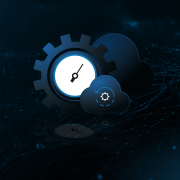
11 features to look for in backup solution
What a good backup solution needs? How to evaluate it? Welcome to our new series “Backup plan evaluation”. New post every friday. Let’s start then.
The cost of lost data depends on the nature of the data loss and the data value, sure. But even a short period of downtime can drive a company out of business. Let’s not forget about the cost associated with recovering the data and loss of productivity.
Data is stored in a myriad of places, from mobile devices and hard drives to data centers in the cloud. The number of data is growing exponentially and is expected to reach 40 ZB in 2020 worldwide, doubling in size every two years. As the amount of stored data grows, data loss has become more prevalent over time. Companies must take the necessary steps to ensure that their data is securely backed up, accessible, and easily recoverable. And because business environments increasingly rely on specialized programs and applications as well, the perfect solution must ensure business continuity by comprehensively protecting entire IT infrastructure.
Mandatory elements
Secure storage
High level of encryption. Encryption today is mostly done on server or appliance site. The problem, however, is that the server-based encryption model has a big negative impact on data security. Your data is unprotected in transit. The best choice of action: encrypt data before it is sent to server, so no third party will ever gain access to it. Even if your server is stolen no unauthorized person will be able to read your data.
Redundancy
Store data in more than one place. Redundancy is a fail-safe measure in case of the storage failure. The simplest RAID levels that offer redundancy are RAID 1 and RAID 5.When one of the drives in a RAID fails, the storage device can continue to work normally. Of course, for even better storage redundancy, use RAID 6 or RAID 10 if possible, which are more reliant to even more than one disk failure.
Complex protection
Files and folders, endpoints (many different devices like computers, laptops, tablets, mobile phones), mailboxes, servers (databases, MS Exchange, system state, network locations) and virtual environment (VMware and Hyper-V)
Accessibility
Users require access to data, applications and services all the time, no matter if they are at work, at home or on some business trip. [in the road] But such accessibility may also cause a significant security risk. That’s why you should check if your solution allows encrypted online access and data sharing.
Fast restore
Check not only if your data can be restored from your backup, but determine how long it will take. See if your solution allows restoring data from a from a backup fast and with ease.
Centrally managed backup
Top solutions allow to centrally and remotely manage all backup processes. That way you can easily control the backup policies on workstations, personal computers and servers. And get the chance to configure and monitor the accuracy of all your backups.
Advanced features
Protection of entire IT infrastructure
Not only protection of all data stored on servers or company devices, but if needed ability to secure whole business infrastructure: with headquarter, many local branches and extensive logistic network. Perfect solution will offer chance to backup data locally and then to maximize data security sent the most vital copies to the company headquarter or even offsite location.
Site-to-site replication
It’s a great way to protect data from hardware failure, because It allows to create replicas of your files on new server in its original format. And it can be used directly on the destination site.
DR, BMR & business continuity
Today time have become one of the most valuable of business resources. It’s not renewable so you must plan ahead. Effective data protection must offer the ability to quickly recover all backed data, to truly guarantee the business continuity. Try to estimate, how much will cost you every hour of a downtime.
Optional elements
Second localization and/or hybrid backup
Another backup copy will only increase your data security. Check if your data center offers at last two independent server localisations, so even in the event of failure of one of them you can still access the data. Or if you are doing backup locally see if your provider allows to replicate data to the cloud.
Backup optimization
Check if your backup solution allows you to perform incremental and differential backup and use data deduplication and compression features. This way during every backup you will save a lot of time and space on your storage too.
Remote office protection
Remote offices and remote employees/home office workers challenge todays IT administrators, because managing and securing data form such distributed environment is not easy. Each office has different infrastructure, needs, network connectivity or data sets, so dealing with such challenging situation your backup solution should offer a range of options to perfectly fit your business needs.
Secure data collaboration
The data sharing becomes one of the greatests benefits of mobile revolution. But not all solutions on the market are safe and protect your documents against unauthorized access. That’s why check for secured – or event better – encrypted synchronization, access and data sharing tools.







